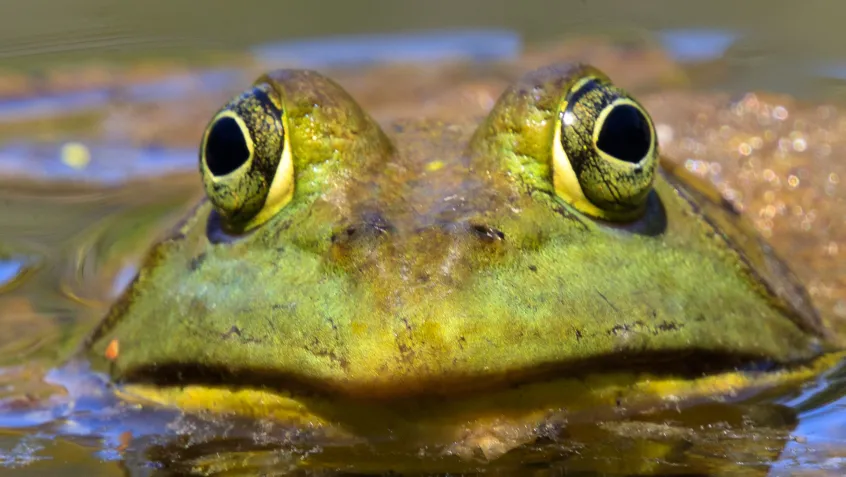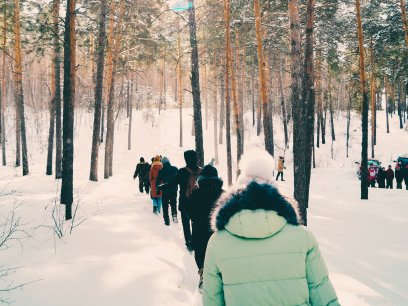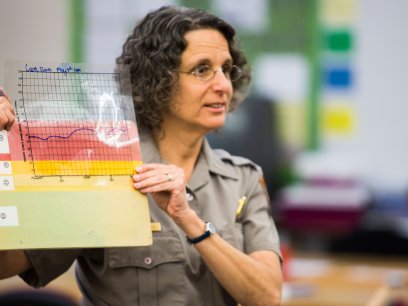
As the weather in some parts of the country remains brutally cold, many people opt to pile on the sweaters, scarves, and coats to keep warm. While this same tactic of adding layers is employed by mammals and birds, you won't catch a newt growing a winter coat—why not?
Cold-blooded animals do not maintain a constant body temperature the way their warm-blooded counterparts do. Warm-blooded animals generate and maintain their high internal temperatures with the energy they gain from constantly metabolizing food. When the temperature of their environment drops, warm-blooded animals need to protect their warm core against heat loss, so they may grow extra fur, puff out their feathers, or find a hideaway that's sheltered from the cold.
For amphibians, reptiles, and fish, adding layers won't help in the winter. These animals need to eat, but external conditions, like heat from the sun and surrounding air, provide the main sources of energy necessary to power their metabolisms and muscle movement. When the surrounding air is warm, the chemical reactions in the muscles of cold-blooded animals proceed more quickly, allowing them greater movement and response from their bodies. As the surrounding temperatures drop, however, the body temperatures of these animals drop as well, limiting their mobility as their energy input decreases.
If a cold-blooded animal were to add layers, these layers would act as a barrier between the animal and its energy source, impeding the warming process. Instead, many cold-blooded animals will hibernate when seasonal temperatures become too low to power the animals' muscle movement. Aquatic frogs such as the leopard frog and the American bullfrog will hibernate in oxygen-rich waters, while some turtles will burrow into the mud to hibernate, slowing their metabolism to the point that they can survive on the limited oxygen found in the surrounding muck.
One particularly notable hibernator is the wood frog—with a habitat range from Georgia up into the Arctic Circle, this guy has to be prepared for chilly temperatures. The wood frog hibernates in crevices in logs and rocks, and when temperatures drop below freezing, the frog will actually freeze as well. Fluid between the cells that make up this creature's body solidify into ice crystals, while antifreeze forms inside the cells themselves, keeping the frog alive through the winter. When spring comes with warmer temperatures, the frog can safely thaw and leap away.
Sources:
- Gates of the Arctic National Park and Preserve. 2018. “Biological Miracle.” National Park Service. Accessed February 21. https://www.nps.gov/gaar/learn/nature/wood-frog-page-2.htm
- Rohrig, Brian. 2013. “Chilling Out, Warming Up: How Animals Survive Temperature Extremes.” ChemMatters Online. https://www.acs.org/content/acs/en/education/resources/highschool/chemmatters/past-issues/archive-2013-2014/animal-survival-in-extreme-temperatures.html
- Scientific American. 1997. “How do frogs survive winter? Why don't they freeze to death?” https://www.scientificamerican.com/article/how-do-frogs-survive-wint/


